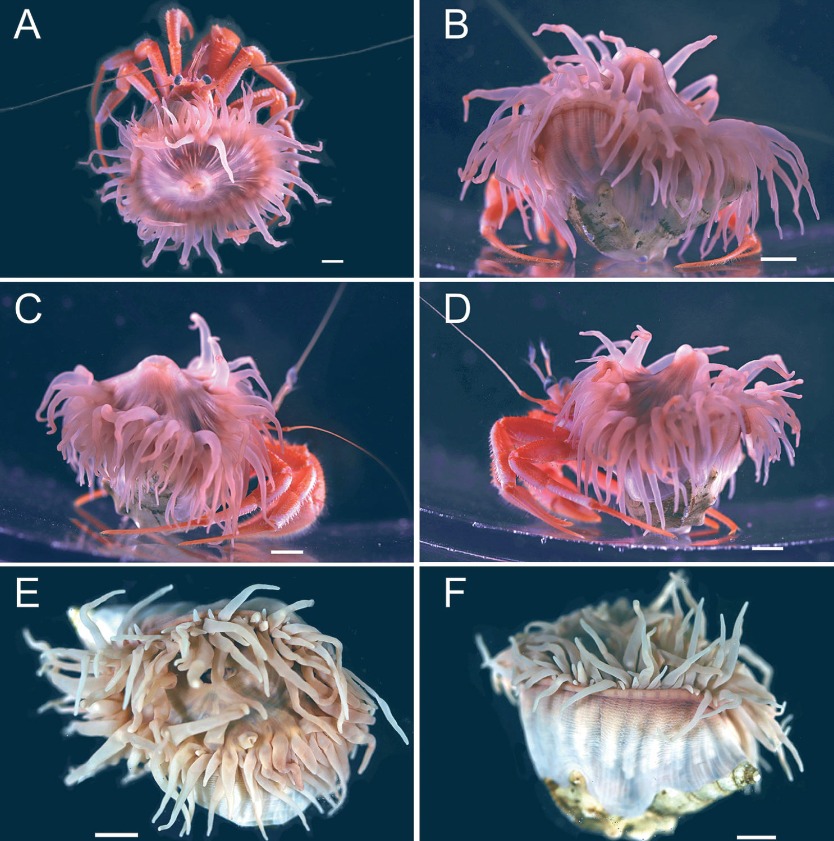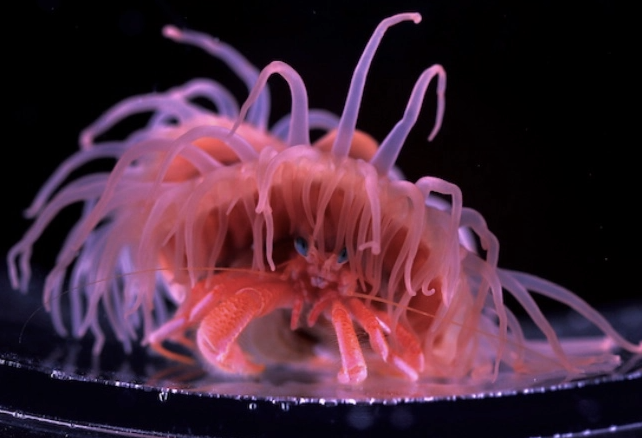A new species of symbiotic sea anemone has been selected as one of the ten remarkable new marine species described in 2022 by the World Register of Marine Species. Named Stylobates calcifer, the deep sea anemone attaches to the shells worn by the Hermit Crab Pagurodofleinia doederleini, but secretes its own hard covering onto that shell in a phenomenon called carcinoecium-forming. Hermits carrying round anemones for extra disguise and protection is fairly common, and even carcinoecium-forming anemones are not unheard of, but the fact that this particular anemone was new to science, and the depth in which it came from, has made it a species of note with WoRMS.

Stylobates calcifer was collected in the deep waters of the Kumano Sea off the coast of west Japan. Its name is the Himekinkara Sea Anemone in Japanese, a common name it had before it was properly described. Its specific scientific name “Calcifer’ is in reference to the name of the fire demon Calcifer, who lives in a castle in the novel “Howls Moving Castle,” which has also been made into an animated film in Japan. Eight specimens of the new anemone were collected by the Toba Aquarium in Mie Prefecture and provided to researcher Akihiro Yoshikawa at the University of Tokyo’s Atmosphere and Ocean Research Institute.
Yoshikawa and his research team investigated and found that the anemone was a new species, and these findings were published in an American journal in March 2022. The creatures, 1 to 2 centimeters in height and 3 to 4 cm in diameter were collected as part of the aquarium’s regular survey on the bathyal zone of the Kumano Sea.
A representative of the aquarium commented, “We hope that many visitors to the facility will learn about this interesting ecology in which the soft anemone creates a home for hermit crabs.” Stylobates calcifer are on display at the facility’s “laboratory for odd creatures” area.
This is the second time that an organism collected by the aquarium has been selected as one of the WoRMS’s “Ten remarkable new marine species,” the first being the Spathochaeta octopodis ragworm in 2019, also found in the Kumano Sea.

Observations
In the paper published in The Biological Bulletin, the authors studied the behavioral interaction between the crab and the anemone, observing that the anemone fed by way of catching suspended particles in the water as well as those produced by the crab as it fed. The interesting question of what the anemone does when the hermit crab vacates the shell was answered too. The crab moves the anemone to its new shell, although it did nothing to help or facilitate the crab in its efforts and the move took “intensive manipulation,” to move it.
The new Stylobates species was collected at a depth of 100-400 m. There are approximately 35 species of anemones that have mutually beneficial relationships with hermit crabs, but the study is perhaps the first observation of the behavioral interaction of the rarely studied carcinoecium-forming mutualism in the deep sea.



